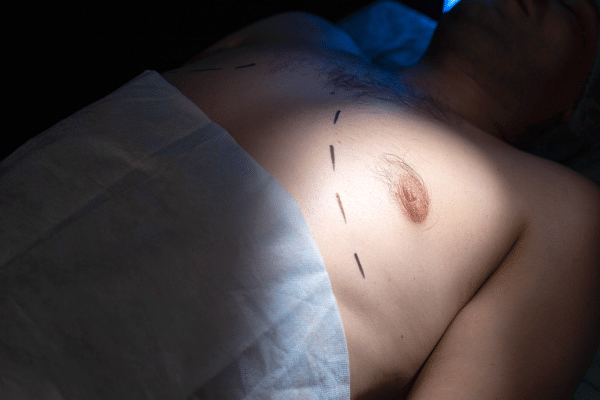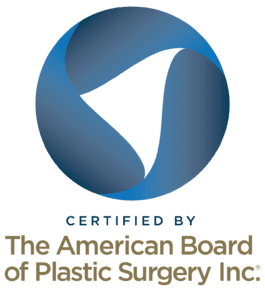If you have enlarged male breasts, you may be embarrassed about the condition and wonder what you can do. Enlarged male breasts, also known as gynecomastia, may be caused by genetics, weight gain, or the use of certain medications.
It’s estimated that almost half of men in the US will experience gynecomastia at some point during their lives. This condition can happen at any age, but male breast reduction surgery can solve the problem.
Interested in learning about gynecomastia surgery recovery? Please continue reading to learn more.
Why Consider Gynecomastia Surgery?
Losing weight may help reduce the effects of enlarged male breasts. But there may be excessive glandular tissue, too, which can make this a problem for thin men. Male breast reduction surgery is the only known effective, long-term treatment for gynecomastia.
After having the excess tissue removed during the plastic surgery, most patients report that they feel comfortable going without a shirt for the first time in many years. Many patients also report a significant boost in self-confidence.
If you feel uncomfortable about the appearance of your chest or avoid outdoor activities because you don’t want people to see your chest, surgery may be a good option.
Gynecomastia Procedure
Surgery usually includes these steps:
Anesthesia
The surgeon will give you either general or IV sedation to keep you comfortable during the procedure. Your surgeon will discuss the options with you before your plastic surgery.
Liposuction
If the gynecomastia is caused by extra fatty tissue, you may only need liposuction. This procedure involves inserting a thin cannula into small incisions in the chest.
The surgeon moves the cannula back and forth to loosen the fat, which is removed by vacuum suction.
Several liposuction methods can be used; your surgeon will use the method most appropriate for you.
Excision
Excision is recommended when excess breast tissue needs to be removed. Excision also may be needed if the areola needs to be reduced, or the nipple will be moved.
Your surgeon also may use a combination of liposuction and excision for the best results.
If you have recently lost weight and have loose skin in the abdomen, you may also consider a tummy tuck.
Gynecomastia Recovery
Recovering after a gynecomastia procedure with liposuction is usually relatively easy. After your cosmetic surgery, your incisions will be covered with bandages or dressings. Also, the surgeon will fit you with an elastic bandage that will reduce swelling and support the chest as you heal.
The surgeon may put a drain in the chest to remove extra fluid and blood, but after three or four days, this will be removed.
The medical staff will give you instructions about caring for your surgical site and drains. They will also provide medications for you to reduce pain and speed up healing. Your surgeon will give specific instructions about your compression garment. It is important to wear your compression garment after surgery exactly as directed by your board certified plastic surgeon.
If you have excision as part of your procedure, it will probably be done outpatient like the liposuction procedure. But excision patients may have more swelling and soreness, but this should fade after two weeks.
It’s essential to ask your plastic surgeon what you can anticipate during the recovery process. Some guidelines will vary from surgeon to surgeon. Common questions include:
- What medications will I receive after surgery?
- What kind of bandages and dressings will I have, and when can they be removed?
- Do I have removable stitches? When can they be removed?
- When can I go back to regular activities and exercise?
- When do I need to come back to the office for follow-up care?
It’s critical to listen to your surgeon’s advice and instructions after the procedure and attend all of your follow-up visits to ensure your recovery process and healing of your scar tissue goes smooth.
The final results of the procedure are usually permanent. But if your gynecomastia was due to using steroids, other drugs, or weight gain, you need to avoid taking those medications and keep a stable weight. Otherwise, your gynecomastia will likely return.
Most patients recover well from gynecomastia, but any cosmetic surgery has risks. If you have shortness of breath, an erratic heartbeat, or chest pains, go to your doctor immediately.
Tips For Faster Gynecomastia Surgery Recovery
You can recover faster from this procedure if you follow these tips:
- You can apply ice or cold compresses to your chest to reduce pain and swelling. But place a towel or cloth between the compress and skin first.
- Get plenty of sleep and rest, especially during the first week.
- Don’t drink alcohol or smoke for at least 14 days after surgery.
- Eat a healthy diet with plenty of lean protein and fruits and vegetables.
- Drink at least 64 ounces of water per day.
- Take at least a week off work and up to two weeks if your job is physical.
- Wear loose-fitting clothing that doesn’t require you to raise your arms to put them on.
Life After Gynecomastia Surgery

Your surgeon may give you prescription pain medication for the first week. But many patients do fine with over-the-counter pain drugs.
Every patient’s healing process is different, but most are ready to return to work after three or four days. Note that some men may lose sensation in the breasts, but this is temporary.
If you want to maintain your results, keeping a healthy lifestyle is essential. For example, maintain a steady weight and avoid using steroids or other drugs that cause enlarged male breasts.
Patients who undergo male breast reduction usually enjoy impressive results that provide a more masculine-looking chest. In addition, the new contours can give you a boost in self-confidence, so talk to your plastic surgeon about gynecomastia surgery today.
Questions and Answers
How long does it take to recovery from gynecomastia surgery?
Recovery duration depends on individual factors, but postoperative guidelines remain consistent. Generally, expect a 4-6 week recovery period. Explore the gynecomastia recovery timeline.
Can you lose weight after gynecomastia?
If oversized breasts hinder exercise and weight loss, consider surgery to reduce their size. Though results may not be flawless, increased comfort can facilitate weight loss efforts.
Is gynecomastia surgery covered by insurance?
Insurance may cover surgery for chest pain impeding daily function. Sports and social events aren’t considered functional. If glandular tissue, not fatty, is the main cause, insurance may offer coverage.
Request a Houston Gynecomastia Consultation
Interested in gynecomastia in Houston? Please set up a consultation with Dr. Ashley Steinberg – Trouvaille Aesthetics & Plastic Surgery Houston today. She’ll talk to you about the gynecomastia procedure and help you decide if this surgery is a fit for you.
References
Gynecomastia Overview. (n.d.). Accessed at https://www.plasticsurgery.org/cosmetic-procedures/gynecomastia-surgery/procedure
Gynecomastia Treatment. (n.d.). Accessed at https://www.mayoclinic.org/diseases-conditions/gynecomastia/diagnosis-treatment/drc-20351799
Gynecomastia Surgery. (n.d.). Accessed at https://www.plasticsurgery.org/cosmetic-procedures/gynecomastia-surgery/recovery













